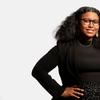Selling Artwork with an Auction House or Art Gallery
- March 18, 2015 12:24

When selling art, you must choose a venue. The two most popular methods are through art dealers or through an auction house. Both have advantages and disadvantages that should be weighed carefully.
Auction houses open up many opportunities. Auctions expose your art to many different people at once and can make for a thrilling sell. There is high risk and high reward. Looking at the gavel price of record sales make this the more tempting option for sellers. However, there are some caveats and few works by an artist consistently realize those record breaking prices.
The cost of sending art to an auction house needs to be balanced with the possible return. Commission can be as high as 40%. The auction house will also charge for reproducing works in catalogues and other promotional materials. Total charges to the seller will often be 20-50% of gross proceeds from the sale. If an item goes unsold, then a buy-back fee is also applied. Negotiating power on fees is reserved for well known, important collectors with highly desirable works of art.
Auction houses hold numerous amounts of items and many go unsold. If art isn’t sold at auction, it is made public record and that piece will carry a stigma. This will make selling it later very difficult.
Going to an art dealer is a different selling environment. Since there is no time pressure, art may take longer to sell. However, in return the art dealer has the know-how to find the right buyer for the piece. There are two options when selling with a dealer: immediate sale or consignment.
The price in an immediate sale is determined by current market value. It is important to cross-reference value to ensure that this is the best possible price for the work. As you do your research, remember an offer from a dealer to purchase your artwork will often be based on market value minus the gallery’s commission. However, a gallery commission can be lower than the fees paid to an auction house. This kind of sale also removes the risk of a piece not selling at auction and being shrouded by a stigma in the eyes of the art collecting community for years to come.
When selling via consignment, the dealer typically takes 20-30% commission from the sale. The gallery will handle all advertising while the seller may be asked to pay for any expense to ensure that the piece is ready to sell, such as restoration or reframing. These circumstances of course vary from gallery to gallery. Consignment contracts can for a duration of 6 months to a year and may be renewed.
Whether you choose an auction house or a dealer for selling your art, be sure to examine which option is better suited for the specific piece. Dealers work best with their network of private collectors. Auction houses hold huge events that are open to the public worldwide. Making an informed decision ensures that you receive the best value from the piece. As a collector, you will need to weigh the pros and cons of each option to determine what is best for your unique situation and needs.
At Ackerman’s Fine Art, we are able to purchase artworks from sellers directly. This is often an attractive option as it means the seller does not have to wait for an upcoming auction or the length of a consignment agreement. We make every effort to make the selling process unintimidating and easy. It is important to us that our clients have a positive experience doing business with our gallery. After all, we know you have options for selling your art and we want to be the best choice.
















100x100_c.jpg)




